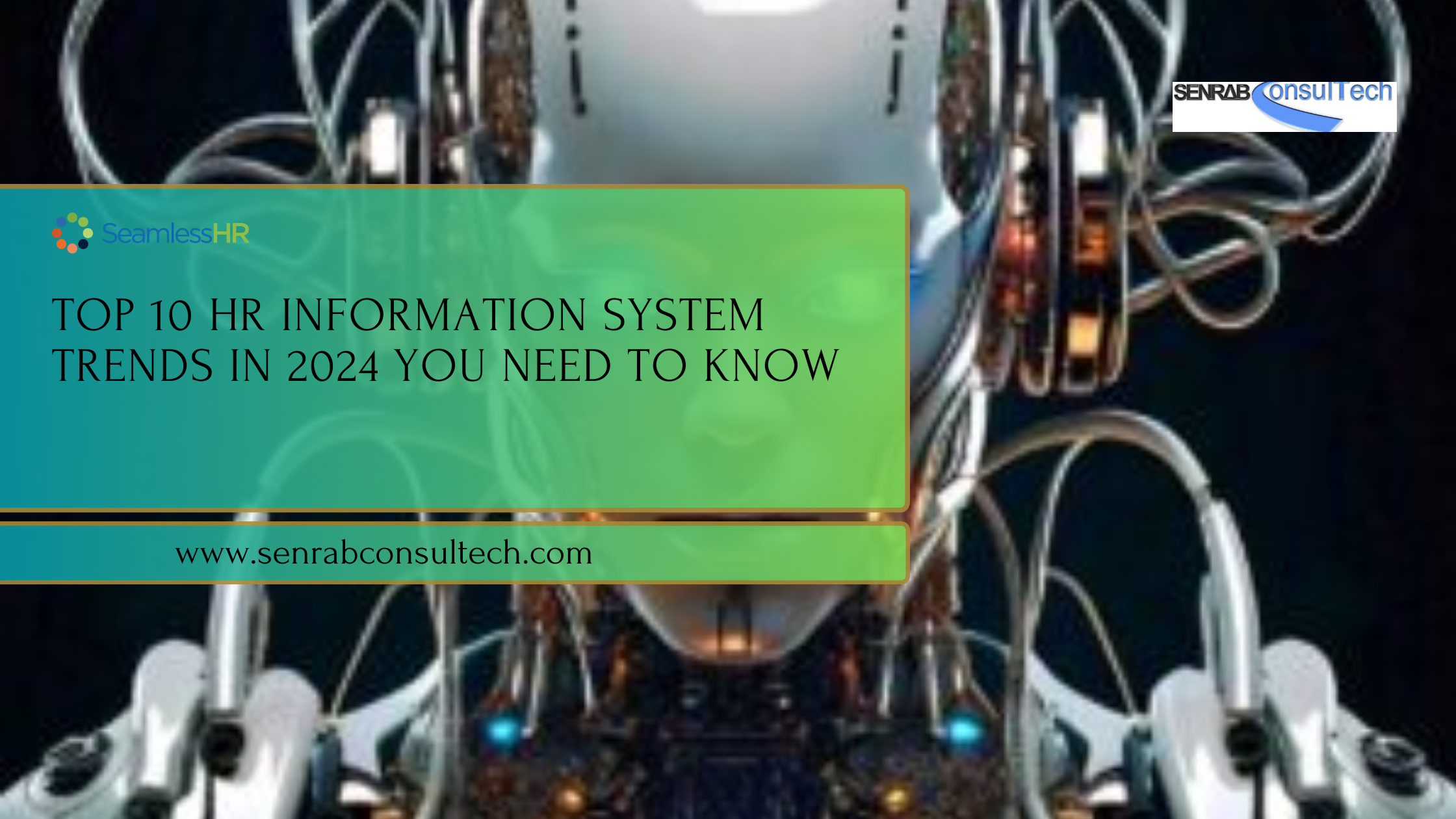Talent acquisition has always been a critical function for organizations aiming to stay competitive in a dynamic business landscape. The challenges of attracting, engaging, and retaining top talent are more complex than ever, making it essential for HR professionals to leverage technology. Enter the HR Information System (HRIS) a powerful tool that is revolutionizing how companies manage their recruitment processes.
This article explores how HRIS is transforming talent acquisition, making it more efficient, data-driven, and candidate-centric.
Overview of Talent Acquisition Challenges
Companies face significant challenges in talent acquisition. High competition for top talent, lengthy recruitment processes, and the constant need to maintain a robust talent pipeline are just a few hurdles HR teams must overcome. Traditional recruitment methods are often time-consuming, labor-intensive, and prone to human error, leading to inefficiencies and missed opportunities.

Introduction to HR Information Systems
An HR Information System (HRIS) is a software solution designed to integrate various HR functions, including recruitment, payroll, benefits administration, and performance management, into a centralized platform. Initially developed to streamline payroll and record-keeping, HRIS has evolved to encompass comprehensive tools for talent management and strategic decision-making.
HRIS combines several components, such as an Applicant Tracking System (ATS), Employee Information Management, Performance Management, and Learning and Development modules. These components work together to automate routine HR tasks, improve data accuracy, and provide valuable insights that inform decision-making.
The Growing Importance of HRIS in Modern Recruitment
Digital transformation is reshaping HR practices across industries, making HRIS indispensable for modern recruitment. As organizations increasingly rely on data to drive decisions, HRIS provides the necessary infrastructure to collect, analyze, and act on recruitment data. By automating processes and enhancing candidate experiences, HRIS enables organizations to attract and retain top talent more effectively. In a business environment where speed and efficiency are paramount, an HRIS is no longer a luxury but a necessity.
How HR Information Systems Transform Talent Acquisition
Streamlining the Recruitment Process
One of the most significant advantages of an HRIS is its ability to streamline the recruitment process. Traditional recruitment methods often involve manual job postings, applicant tracking, and resume screening, all of which are time-consuming and prone to errors. With an HRIS, these tasks are automated, reducing the time-to-hire and minimizing human error.
An HRIS integrates with job boards, social media platforms, and company websites, allowing HR teams to post job openings simultaneously across multiple channels. The system automatically tracks applicants throughout the hiring process, ensuring that no candidate falls through the cracks. By automating these tasks, HR teams can focus on more strategic aspects of recruitment, such as interviewing and candidate engagement.

Enhancing Candidate Experience
In today’s candidate-driven job market, providing a positive candidate experience is crucial for attracting top talent. An HRIS enhances the candidate experience by offering personalized communication, simplifying the application process, and providing real-time updates.
With an HRIS, candidates can easily apply for jobs through user-friendly interfaces and receive instant feedback on their application status. The system also allows HR teams to personalize communication, sending targeted messages and updates to candidates throughout the hiring process. This level of engagement helps build a positive employer brand and keeps candidates interested in the opportunity.
Data-Driven Decision Making
In the age of big data, organizations that leverage data-driven decision-making have a competitive edge. An HRIS provides powerful analytics tools that enable HR teams to make informed decisions about talent acquisition. By analyzing data on candidate sources, time-to-hire, and applicant quality, HR teams can identify trends and optimize their recruitment strategies.
Predictive analytics, a feature often found in advanced HRIS, takes data-driven decision-making to the next level. By analyzing historical data, the system can predict which candidates are most likely to succeed in a particular role, helping HR teams make better hiring decisions. Additionally, HRIS reporting and dashboard features provide real-time insights into recruitment KPIs, allowing HR teams to monitor performance and make adjustments as needed.
Key Features of an HR Information System for Talent Acquisition
Applicant Tracking System (ATS) Integration
An Applicant Tracking System (ATS) is a core component of any HRIS, providing a centralized platform for managing the recruitment process. The ATS automates job postings, tracks applicant progress, and facilitates communication between HR teams and candidates.
By integrating an ATS into an HRIS, organizations can streamline their recruitment efforts, reduce administrative burden, and improve the overall efficiency of their talent acquisition process. The ATS also provides valuable data on recruitment performance, enabling HR teams to refine their strategies and make data-driven decisions.
Resume Parsing and Skill Matching
One of the most time-consuming aspects of recruitment is screening resumes and matching candidates to job requirements. An HRIS automates this process through resume parsing and skill matching capabilities. The system scans resumes for relevant keywords, qualifications, and experience, then ranks candidates based on their fit for the role.
This automation not only speeds up the recruitment process but also ensures that no qualified candidate is overlooked. By matching candidates’ skills with job requirements, HR teams can quickly identify top talent and move them through the hiring process more efficiently.
Candidate Relationship Management (CRM)
Building and maintaining a talent pipeline is essential for long-term recruitment success. An HRIS with Candidate Relationship Management (CRM) capabilities allows HR teams to engage with passive candidates, nurturing relationships over time.
The CRM module helps HR teams track candidate interactions, send personalized communications, and keep potential candidates engaged until a suitable opportunity arises. This proactive approach to talent acquisition ensures that organizations have a ready pool of qualified candidates when a position becomes available.
Onboarding Capabilities
The recruitment process doesn’t end with a job offer; onboarding is a critical step in ensuring a smooth transition from candidate to employee. An HRIS with onboarding capabilities streamlines this process by automating paperwork, setting up new hire accounts, and providing training resources.
By integrating onboarding into the HRIS, organizations can create a seamless experience for new hires, helping them feel welcomed and prepared from day one. This positive onboarding experience can improve employee retention and satisfaction, further enhancing the value of the HRIS in talent acquisition.
Choosing the Right HR Information System for Talent Acquisition
Identifying Your Talent Acquisition Needs
Before selecting an HRIS, it’s essential to assess your organization’s current recruitment challenges and determine the key features you need. Whether you’re looking to streamline your process, improve candidate experience, or leverage data analytics, understanding your needs will guide your decision-making.
Evaluating HR Information System Providers
With many HRIS providers in the market, choosing the right one can be daunting. It’s important to compare vendors based on their features, user-friendliness, scalability, and customer support. Additionally, consider how well the HRIS integrates with your existing HR technology stack.
Implementation and Adoption
Successfully implementing an HRIS requires careful planning and change management. Engage key stakeholders early in the process, provide training for users, and address any resistance to change. Ensuring user adoption is crucial for realizing the full benefits of the HRIS.
Conclusion
HR Information Systems have emerged as a game changer for talent acquisition, offering organizations the tools they need to stay competitive in a rapidly changing business landscape. By streamlining recruitment processes, enhancing candidate experiences, and enabling data-driven decision-making, HRIS empowers HR teams to attract, engage, and retain top talent. As digital transformation continues to reshape HR practices, the adoption of HRIS will become increasingly essential for the organization.


